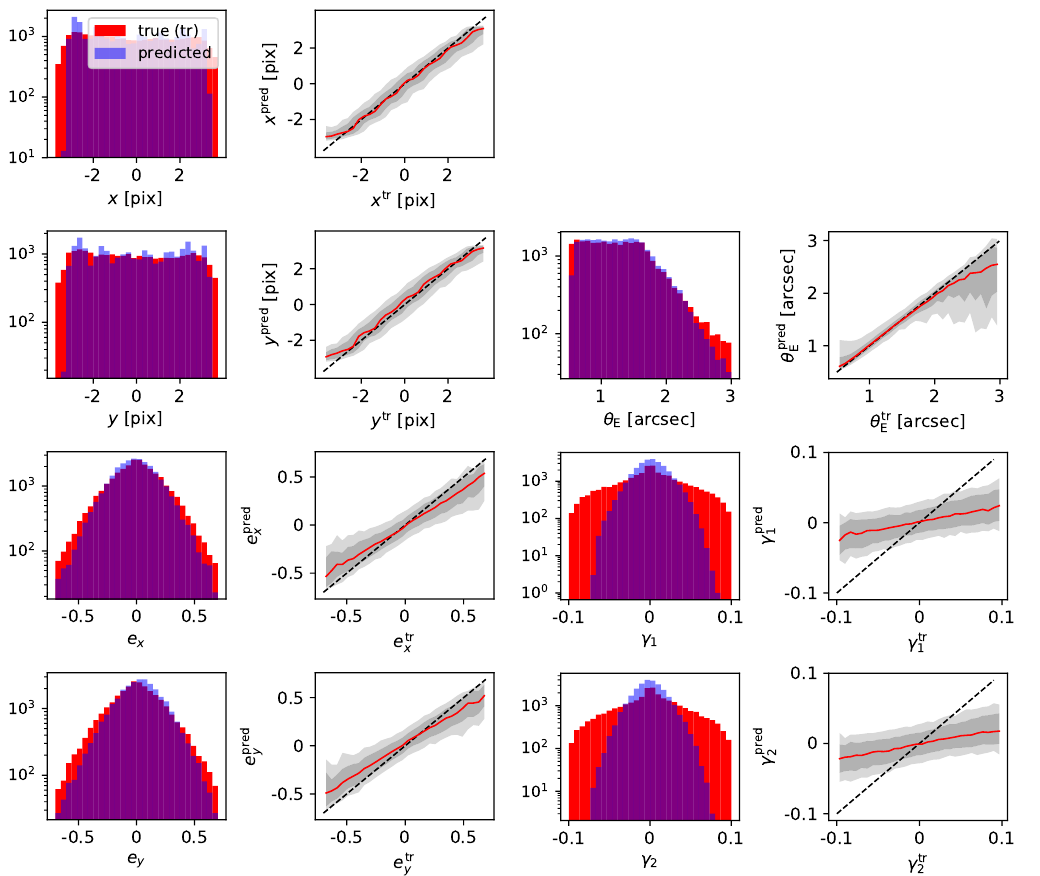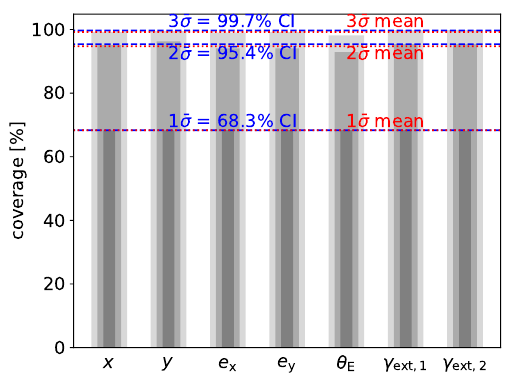HOLISMOKES. IX. Neural network inference of strong-lens parameters and uncertainties from ground-based images
Modeling of strong gravitational lenses is a necessity for further applications in astrophysics and cosmology. Especially with the large number of detections in current and upcoming surveys such as the Rubin Legacy Survey of Space and Time (LSST), it is timely to investigate in automated and fast analysis techniques beyond the traditional and time consuming Markov chain Monte Carlo sampling methods. Building upon our (simple) convolutional neural network (CNN) presented in HOLISMOKES IV, we present here another CNN, specifically a residual neural network (ResNet), that predicts the five mass parameters of a Singular Isothermal Ellipsoid (SIE) profile (lens center x and y, ellipticity ex and ey , Einstein radius θE ) and the external shear (γext,1 , γext,2 ) from ground-based imaging data. In contrast to our CNN, this ResNet further predicts a 1σ uncertainty for each parameter. To train our network, we use our improved pipeline from HOLISMOKES IV to simulate lens images using real images of galaxies from the Hyper Suprime-Cam Survey (HSC) and from the Hubble Ultra Deep Field as lens galaxies and background sources, respectively. We find overall very good recoveries for the SIE parameters, especially for the lens center in comparison to our previous CNN, while significant differences remain in predicting the external shear.

From our multiple tests, most likely the low ground-based image resolution is the limiting factor for predicting the external shear. Given the run time of milli-seconds per system, our network is perfectly suited to predict the next appearing image and time delays of lensed transients in time. Therefore, we also present the performance of the network on these quantities in comparison to our simulations although the achieved precision allows only a first-order estimate of time-delays on real lens systems and needs further refinement through follow-up modeling. Nonetheless, our ResNet is able to predict the SIE and shear parameter values in fractions of a second on a single CPU such that we are able to process efficiently the huge amount of expected galaxy-scale lenses in the near future.

